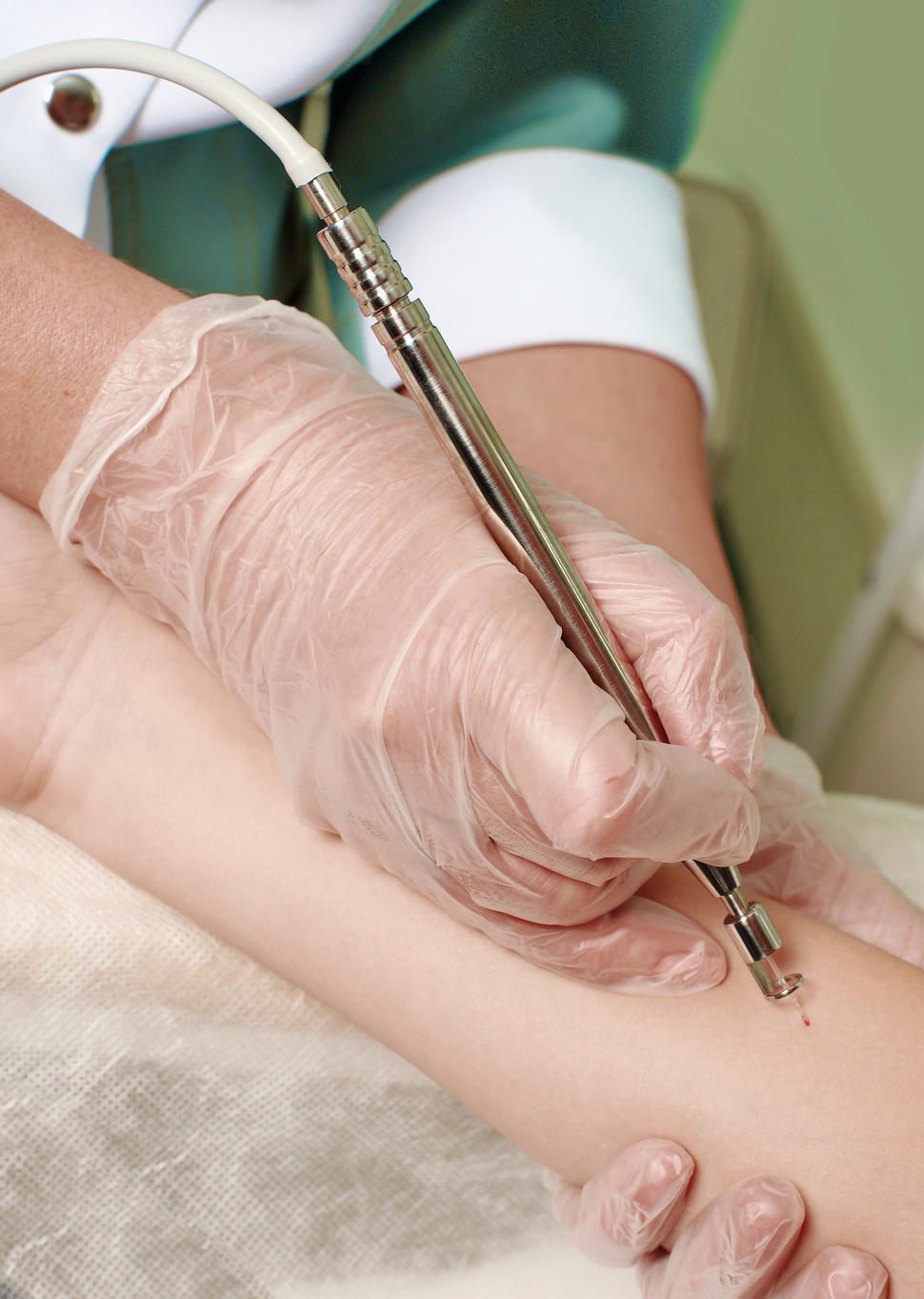What is laser therapy?
Laser therapy uses an intense, narrow beam of light to remove or destroy cancer and abnormal cells that can turn into cancer. Tumor cells absorb light of different wavelengths (or colors) than normal cells do. So, tumor cells can be targeted by selecting the proper wavelength of the laser. Laser therapy is a type of local treatment, which means it treats a specific part of your body.
Lasers can also be used in other types of local treatment, including photodynamic therapy and a treatment that is like hyperthermia, called laser interstitial thermal therapy, or LITT.
Laser therapy can also be used with surgery. Doctors can use lasers to seal:
- nerve endings after surgery, which reduces pain
- lymph vessels after surgery, which helps reduce swelling and limit the spread of cancer cells
- blood vessels during surgery, which reduces bleeding
Cancers and precancers treated with laser therapy
Laser therapy is most often used to treat cancers and precancers on the surface of the body or the lining of internal organs. It is used for:
- basal cell skin cancer
- non-small cell lung cancer
- colorectal polyps
- precancers of the:
Lasers may also be used to ease certain symptoms of advanced cancer, such as bleeding or blockages. For example, lasers can be used to destroy parts of a tumor that is blocking the windpipe, throat, colon, or stomach.
How laser therapy is given
Laser therapy is often given through an endoscope, a narrow, lighted tube used to look at tissues inside the body. Flexible endoscopes use optical fibers, which are thin fibers, used singly or in bundles to transmit light to the therapy site. It is inserted through an opening in the body, such as the mouth, nose, anus, or vagina. Laser light is then precisely aimed to cut or destroy a tumor.
Types of lasers used in cancer treatment
Three types of lasers are used to treat cancer:
- carbon dioxide (CO2) lasers
- argon lasers
- neodymium:yttrium-aluminum-garnet (Nd:YAG) lasers
CO2 and argon lasers can cut the skin’s surface without going into deeper layers. So, they can be used to remove cancers on the surface of the body, such as skin cancer.
The Nd:YAG laser is more often used through an endoscope to treat internal organs, such as the uterus, esophagus, and colon.
Nd:YAG laser light can also travel through optical fibers into specific areas of the body during LITT.
Argon lasers are often used in photodynamic therapy.
Benefits of laser therapy
When cutting tissue, lasers seal the cut from bleeding, so they may cause less damage to normal tissues when used in surgery. As a result, you usually have less pain, bleeding, swelling, and scarring. With laser therapy, the time in surgery is usually shorter. In fact, laser therapy can often be done on an outpatient basis. It takes less time to heal after laser surgery, and you are less likely to get an infection.
Drawbacks of laser therapy
Surgeons must have special training before they can do laser therapy and strict safety measures must be followed. Laser therapy is expensive and requires specialized equipment. Also, the effects of laser therapy may not last long, so doctors may have to repeat the treatment for you to get the full benefit.
Not every hospital or cancer center in the country has skilled doctors and the machines needed to use lasers in cancer treatment. Talk with your doctor or contact hospitals and cancer centers in your area to find out if they are using lasers.
Laser therapy research
Doctors are testing lasers to treat cancers and precancers. If you are interested in finding a clinical trial that uses lasers, use the advanced clinical trials search form or call NCI's Cancer Information Service at 1–800–4–CANCER (1–800–422–6237).
